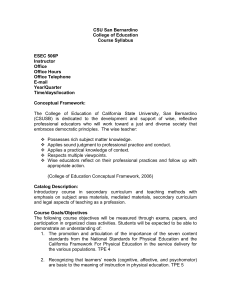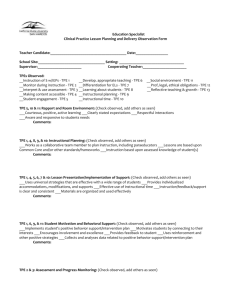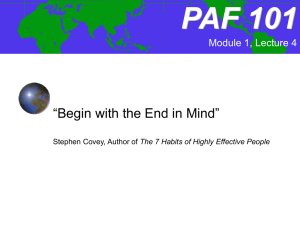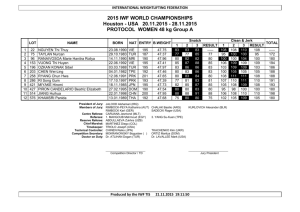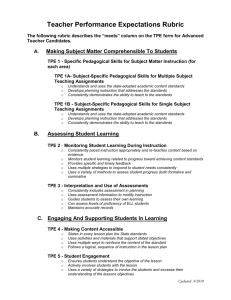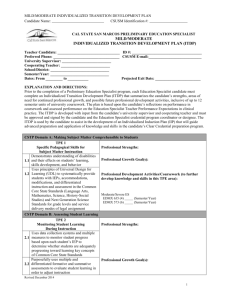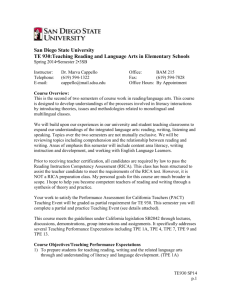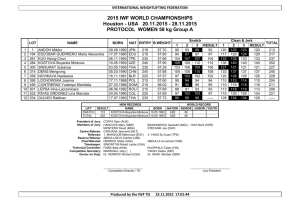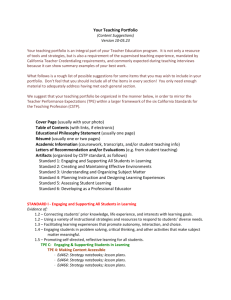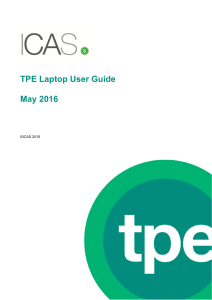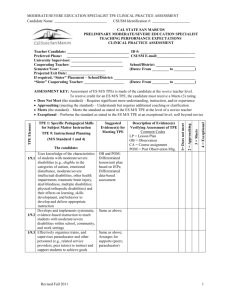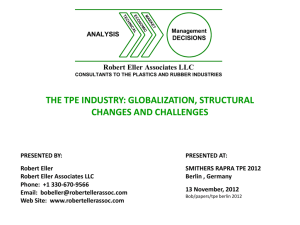Observation Prep Form
advertisement
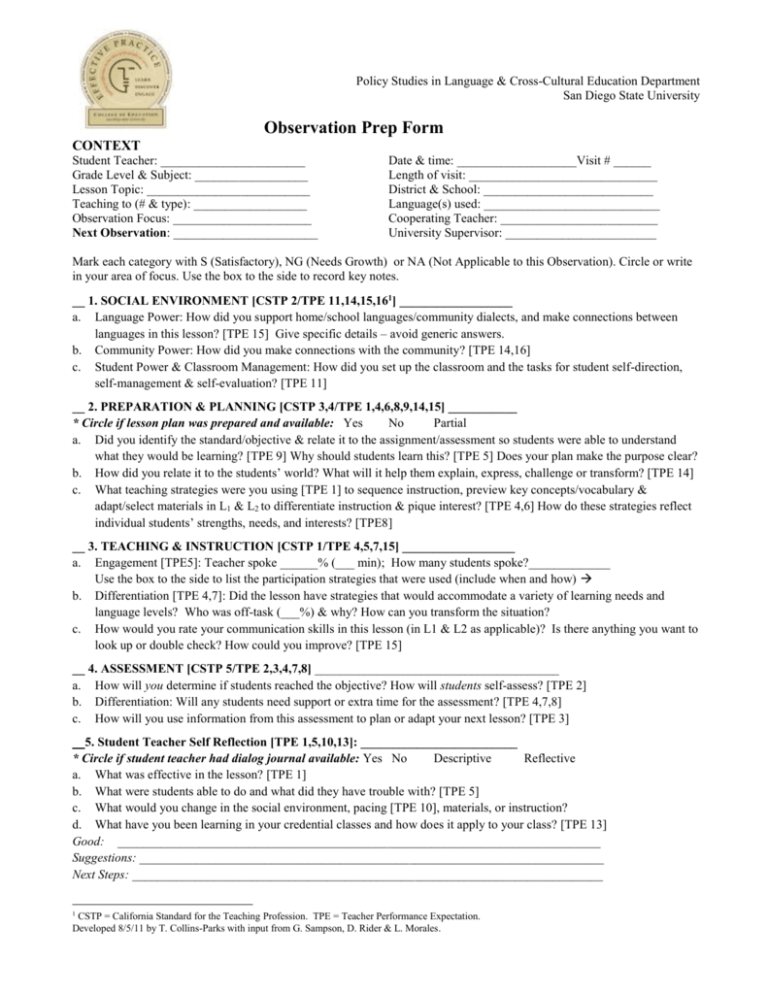
Policy Studies in Language & Cross-Cultural Education Department San Diego State University Observation Prep Form CONTEXT Student Teacher: _______________________ Grade Level & Subject: __________________ Lesson Topic: __________________________ Teaching to (# & type): __________________ Observation Focus: ______________________ Next Observation: _______________________ Date & time: ___________________Visit # ______ Length of visit: ______________________________ District & School: ___________________________ Language(s) used: ____________________________ Cooperating Teacher: _________________________ University Supervisor: ________________________ Mark each category with S (Satisfactory), NG (Needs Growth) or NA (Not Applicable to this Observation). Circle or write in your area of focus. Use the box to the side to record key notes. __ 1. SOCIAL ENVIRONMENT [CSTP 2/TPE 11,14,15,161] __________________ a. Language Power: How did you support home/school languages/community dialects, and make connections between languages in this lesson? [TPE 15] Give specific details – avoid generic answers. b. Community Power: How did you make connections with the community? [TPE 14,16] c. Student Power & Classroom Management: How did you set up the classroom and the tasks for student self-direction, self-management & self-evaluation? [TPE 11] __ 2. PREPARATION & PLANNING [CSTP 3,4/TPE 1,4,6,8,9,14,15] ___________ * Circle if lesson plan was prepared and available: Yes No Partial a. Did you identify the standard/objective & relate it to the assignment/assessment so students were able to understand what they would be learning? [TPE 9] Why should students learn this? [TPE 5] Does your plan make the purpose clear? b. How did you relate it to the students’ world? What will it help them explain, express, challenge or transform? [TPE 14] c. What teaching strategies were you using [TPE 1] to sequence instruction, preview key concepts/vocabulary & adapt/select materials in L1 & L2 to differentiate instruction & pique interest? [TPE 4,6] How do these strategies reflect individual students’ strengths, needs, and interests? [TPE8] __ 3. TEACHING & INSTRUCTION [CSTP 1/TPE 4,5,7,15] __________________ a. Engagement [TPE5]: Teacher spoke ______% (___ min); How many students spoke?_____________ Use the box to the side to list the participation strategies that were used (include when and how) b. Differentiation [TPE 4,7]: Did the lesson have strategies that would accommodate a variety of learning needs and language levels? Who was off-task (___%) & why? How can you transform the situation? c. How would you rate your communication skills in this lesson (in L1 & L2 as applicable)? Is there anything you want to look up or double check? How could you improve? [TPE 15] __ 4. ASSESSMENT [CSTP 5/TPE 2,3,4,7,8] _______________________________________ a. How will you determine if students reached the objective? How will students self-assess? [TPE 2] b. Differentiation: Will any students need support or extra time for the assessment? [TPE 4,7,8] c. How will you use information from this assessment to plan or adapt your next lesson? [TPE 3] _ 5. Student Teacher Self Reflection [TPE 1,5,10,13]: _________________________ * Circle if student teacher had dialog journal available: Yes No Descriptive Reflective a. What was effective in the lesson? [TPE 1] b. What were students able to do and what did they have trouble with? [TPE 5] c. What would you change in the social environment, pacing [TPE 10], materials, or instruction? d. What have you been learning in your credential classes and how does it apply to your class? [TPE 13] Good: _____________________________________________________________________________ Suggestions: __________________________________________________________________________ Next Steps: ___________________________________________________________________________ 1 CSTP = California Standard for the Teaching Profession. TPE = Teacher Performance Expectation. Developed 8/5/11 by T. Collins-Parks with input from G. Sampson, D. Rider & L. Morales.
